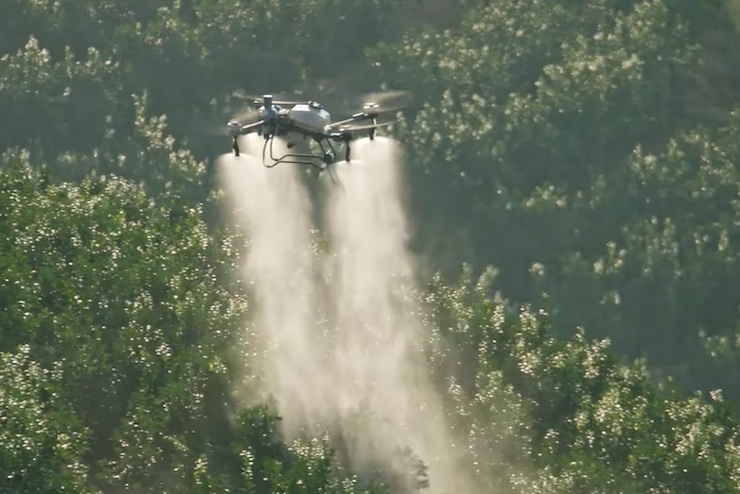
Drones are a critical component of the U.S. farming industry’s new emphasis on “precision” agriculture. With AI-driven sensors, high-resolution zoom cameras and properly designed spray nozzles, drones can deliver seeds, fertilizer and pesticides to the areas of a farm that need them most – based on documented soil fertility and crop stress conditions – reducing input waste while maximizing farm yields.
On large farms especially, specially designed farm drones can reduce average labor costs while enhancing sustainability. The added expense of acquiring a drone or renting a drone pilot is more than made up for by the long-term investment returns.
China-based DJI, the world’s recognized leader in drone design and sales, has already revolutionized precision agriculture with its state-of-the-art Agras T40 drone, which features a 40-liter liquid spray load capacity and 50 kg spread load. The drone’s coaxial twin-rotor design, dual-atomized spraying system, and integrated aerial surveying and mapping system have made it the most versatile farm drone currently on the market.
But DJI’s latest drone, the Agras T60, released for sale on November 23, goes one step further. Its enhanced 60-liter spray capacity – a 50% upgrade over the T-40 – will translate into fewer refills and more acreage covered in a single flight. It also means less frequent interruptions for battery recharging, reducing the time and labor needed for mapping and spraying operations.
As described by DJI’s Igor Bogdanov, the T-60 retains all the portability features of the T-40 – including foldable arms – but also offers improved camera and imaging technology for more precise and detailed farm and orchard inspections. The spray nozzle system is also more advanced, allowing for different sized grains to be spread and multiple spray operations in diverse sized fields along a single line of sight.
The drone can also view its surroundings at a much wider scope, reducing the risk of collisions with trees and power lines. The magazine Drone XL calls the T-60 a “game-changer.”
Other UAV companies, including France-based Parrot and US-based Trimble have designed and sold agricultural drones since 2014, but in recent years DJI has continually diversified and upgraded its own agricultural drones – the T20 immediately preceded the T40, which debuted just a year ago – allowing it to increase its dominance over the global market.
Currently, DJI Agras drones (all models) are used in 100 countries worldwide, with 200,000 units in operation, treating field crops like corn, soybeans, rice, and wheat in addition to major cash crops such as coffee, tea, citrus, cotton, and sugarcane.
With the second most farm acreage in the world, the Agras T-60 will likely get extensive use at home in China but the market in other countries, including world-leader India, as well as Japan, Russia and the United States is vast and growing.
Still, new constraints on sales of DJI drones in the United States – under federal mandated “Made in America” production requirements – may well limit the company’s future penetration of the US market. In addition, India is anxious to design and produce its own agricultural drones, limiting foreign penetration to government-approved joint ventures and other local partnerships.
The T-40 debuted in North America in October 2022. For now, DJI says it plans to limit its current sales and use of the T-60 to China before seeking to expand elsewhere.
|